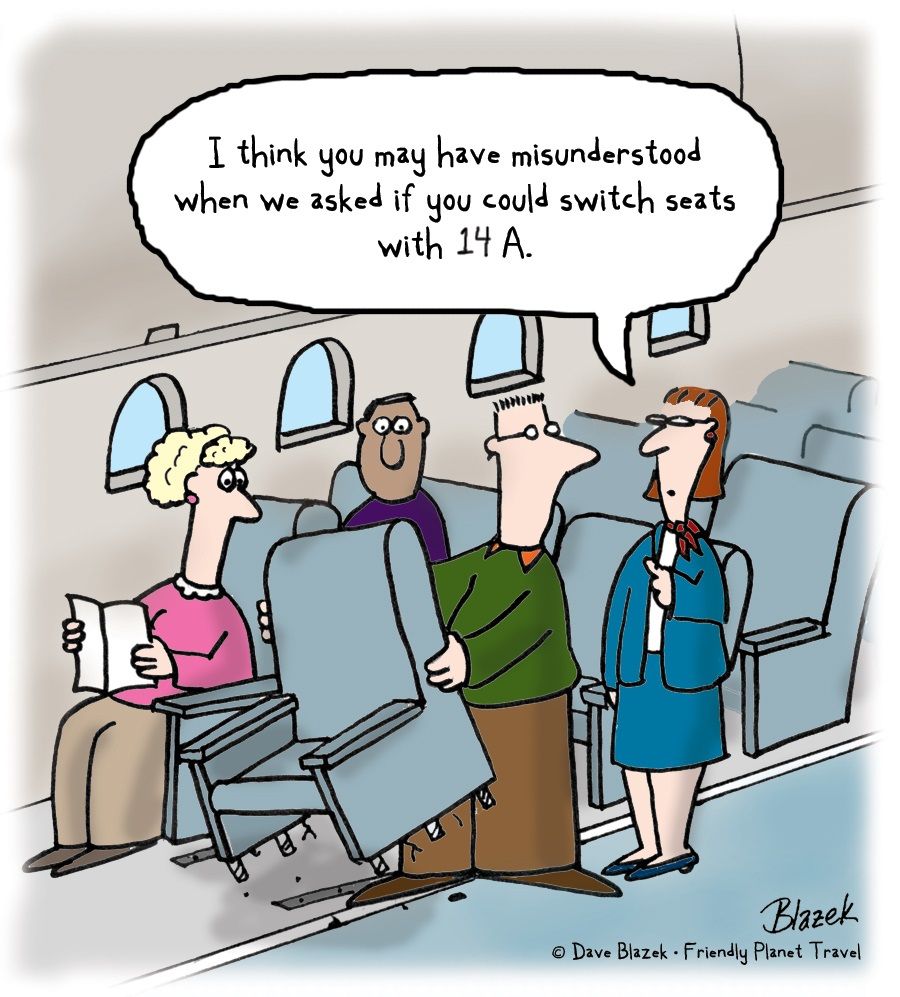 On a recent flight from Seattle to Dallas, the four-hour flight morphed into nine hours sitting on the plane. Thunderstorms in Dallas caused the problem. We circled the airport for hours, flew to Austin to refuel, and finally landed in DFW.
On a recent flight from Seattle to Dallas, the four-hour flight morphed into nine hours sitting on the plane. Thunderstorms in Dallas caused the problem. We circled the airport for hours, flew to Austin to refuel, and finally landed in DFW.
In all my years of flying (I’m a million-miler+ on American) I’ve never heard a pilot do so well at continually informing the passengers during a flight gone bad. About every 20 minutes he gave us a detailed update on what was happening and why. He was empathetic, calm, detailed, and courteous.
I couldn’t help but compare this experience to another flight I was on years ago. We were stuck on the tarmac for three hours but never received an update from the pilot. Tempers flared, rightly so.
Leaders, keep your constituency informed. Not just during emergency situations but all the time. Maintain an informed organization. In her worth-the-read book titled Powerful, Patty McCord (former chief talent officer at Netflix) says:
-
- If your people aren’t informed by you, there’s a good chance they’ll be misinformed by others.
- Ensure that communications flows both ways.
- The job of communication is never done. It’s not an annual or quarterly, or even monthly or weekly function. A steady stream of communication is the lifeblood of competitive advantage.
In my organization, we send a weekly email to everyone involved. It briefly recounts what happened the previous week (with lots of praise for individual contributions), mentions upcoming events, and updates progress on projects. It’s a simple tool that helps maintain an informed organization.
Good and thorough communication is so difficult that the chances of a leader over-communicating are slim—but try anyway.
[reminder]What are your thoughts about this essay?[/reminder]

 I’m continually befuddled and frustrated by one-sided conversations.
I’m continually befuddled and frustrated by one-sided conversations. This post will be good news to everyone, except narcissists.
This post will be good news to everyone, except narcissists. One short phrase from the New Testament can help maintain healthy relationships both at home and work. It provides a quick and sure way to clarify misunderstandings, resolve problems, and properly express anger.
One short phrase from the New Testament can help maintain healthy relationships both at home and work. It provides a quick and sure way to clarify misunderstandings, resolve problems, and properly express anger.